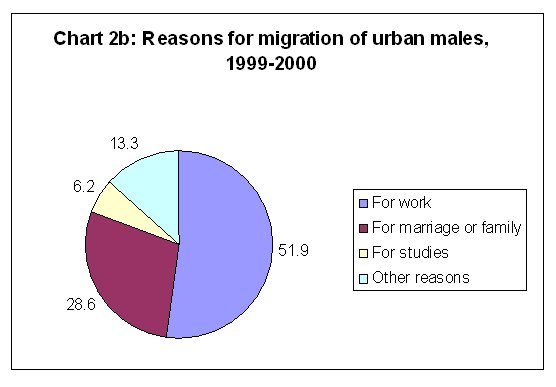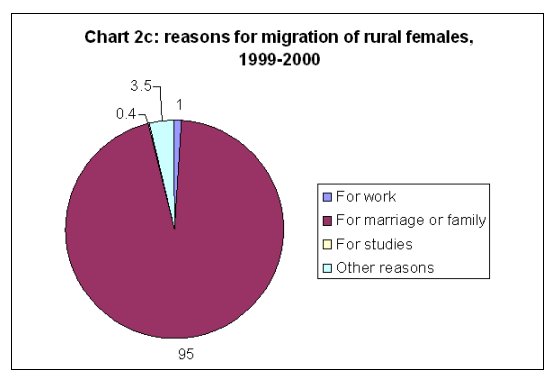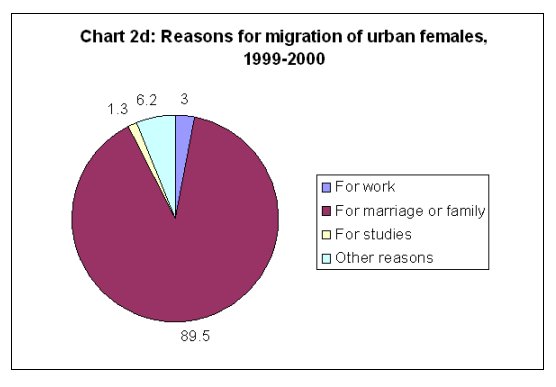Themes > Features
04.10.2007
Dealing with Short-Term Migration
Probably
more than at any time in the past, the Indian economy is being fuelled
by the movement of labour. The current rapid growth of the Indian economy
is certainly fuelled by movements of labour - from villages to other
villages, towns and cities; within and across districts, states and
even national borders.
Such migration is not only a sign of dynamism – it reflects increasing
inequalities, agrarian crisis and inadequate livelihood generation in
many parts of rural and urban India. Apparently, a growing part of it
is short-term and often repeated, although destinations may change.
And while it has already created huge changes in the lives and work
patterns of ordinary Indians, these consequences are yet to be adequately
recognised and addressed by public policy.
The ways in which this migration has contributed to macroeconomic stability
are numerous. Remittances sent back to India by Indians working abroad
(dominantly but not exclusively in oil-exporting countries of the Gulf
and West Asia) have generated current account surpluses and contributed
more to the Indian balance of payments since the early 1990s than all
forms of capital inflow out together. Internal migration has played
a crucial role in allowing rural people to cope with the consequences
of agrarian distress and the ravaged rural economy in many parts of
India.
Large construction activities in many Indian cities, as well as other
major public works, depend upon labour drawn from villages as far apart
as Andhra Pradesh and eastern Bihar. Migrants from across the eastern
borders of India fill many service sector occupations, and even formal
industries rely on migrant workers to fill in the “casual labour” slots
in their workforce, and to provide support services that reduce the
costs of other labour. Large farmers in places as distant as Haryana
and Maharashtra rely on seasonally migrant labour for cultivation.
Much of this is not new. But there are new features: the increasing
incidence of women travelling – on their own or in groups – to find
work; the greater willingness of many to travel long distances for short-term
work or even without the promise of any work; the sheer extent of mass
migrations from certain areas; the growing likelihood of finding evidence
of some migration in almost every part of India.
Not all of this migration in recent years has been because of push factors.
There is no doubt that the availability of work in the Middle East and
in other countries, as well as the growing demand for more skilled workers
such as software engineers and teachers in the developed world, have
played a role in increasing cross-border migration. But a very substantial
part, especially of internal migration, is distress-led, driven by the
complete collapse of rural employment generation, the economic difficulties
of cultivation and also the inadequate employment opportunities in towns.
This is why most migrant workers in India today are poor and with few
of the resources or social networks that could smoothen what can be
a traumatic and painful process. Yet public policy does little to alleviate
this – in fact, most public interventions and regulations work effectively
to make the process even more difficult and traumatic.
One reason for this is because our statistical system is not really
designed to capture short-term migration, and so policy makers also
may remain simply unaware of the sheer extent and likely increase in
this phenomenon. The Census of India, for example, captures only permanent
migration, by asking respondents if they had previously lived somewhere
else, and how long ago that was. Even in this there is likelihood of
some under-enumeration, especially of destitute migrants without fixed
address or defined home structures, since the Census covers households.
The National Sample Survey is slightly better, in that it tries to capture
some short-term migration of two months' duration or longer. However,
there too there are problems in the way the sample is structured, since
it is household-based. Further, the nature of the questions asked (migrants
must have spent at least 60 days in the previous year away from their
place of residence) tends to leave out those who travel on a seasonal
basis for shorter periods (say a few weeks or a month in the lean agricultural
season) as well as those who commute fairly long distances to work on
a regular basis.

Chart 1 provides information on the aggregate migration rates according to the NSS, which includes both long-term migration and that which the NSS defines a short-term migration for work. The rates in Chart 1 refer to per cent of population, and it is immediately evident these rates are significantly higher for women than men in both urban and rural areas. Further, the evidence suggests, if anything, a slight decline in these migration rates over successive NSS rounds. (The data for the latest round, 2004-05, have not yet been released.)




The reason for this is amply evident from Charts 2a to 2d – that is,
women still migrate dominantly for marriage, and to a much lesser extent
as girl children moving with the rest of the family. Indeed, marriage
accounts for between 80 to 90 per cent of recorded permanent migration
of women. For men, migration is due to more varied causes – work dominates
for urban men, while work and marriage/family reasons are equally important
for rural men.
However, the phenomenon of short-term or seasonal migration that was
mentioned at the start of this article is generally not captured in
these figures. The NSS data on short-term migration (of more than 60
days duration in a year) for work is a closer approximation, and that
reveals a different pattern for both men and women. This is presented
in Table 1.
Table 1: Per cent of workers who stayed away from residence for employment, for more than 60 days in a year, by type of contract, 1999-2000
|
This reveals
that such absence in search of work is higher among rural than urban
workers, and that it is highest (for both male and workers) among casual
labour and those who are usually unemployed. Gender gaps in migration
for such work are much smaller than they are in permanent migration
for work.
Such migration is also affected by levels of living and the extent of
poverty. Charts 3 and 4 show that for rural workers, those in the lowest
expenditure class (in terms of mean per capita monthly expenditure)
have a greater tendency to engage in such short-term migration, and
that in general such migration decreases as the per capita household
expenditure increases.


For rural
women engaging in this type of movement for work, the tendency was higher
among the poorest groups, or lowest expenditure categories, and to a
lesser extent among the richest groups.
This reinforces the conclusion about the complex nature of short-term
migration today, which can be a liberating force reflecting expansion
of opportunities for some, and a desperate source of livelihood as part
of a survival strategy of the household, for others.
While the aggregate data may not tell us very much, evidence from the
field in different parts of India suggests that there are some relatively
new features of short-term migration for work in India. These re obviously
not completely new, but it is likely that their incidence has increased.
Thus, there are many more examples of women traveling – on their own
or in groups – to find work, and also a greater willingness of both
men and women to travel long distances for short-term work or even without
the promise of any work. There have been reports of mass migrations
from certain areas, and there is increasing likelihood of finding evidence
of some migration in almost every part of India.
Despite this, public policy is alarmingly inadequate in terms of recognizing
and dealing with migration. These inadequacies cover both points of
origin and destination. Consider the conditions for would-be migrants
at their place of residence: there are no official strategies for providing
information regarding employment in source areas or assistance in ensuring
contract with minimum wages and acceptable work conditions.
Then, there are no attempts to ease process of travel – workers left
to mercy of contractors or to manage on their own. There is little public
consideration for safety of migrants (especially women migrants). Often
no basic facilities (housing sanitation, etc) at provided at the destination
– for example, construction workers often have to live in tents or makeshift
homes, provide their own food, manage without proper sanitation, and
so on.
Typically for such short-term migrants there is no public provision
of schools, crèches or medical services. Nor is there anything
resembling work protection at the destination: there are no public help
centres for migrants,
no information offices, no complaint cells, indeed no mechanisms to
redress any grievances, such as non-payment of wages, bad conditions
of work, physical exploitation or violence. Instead, local officialdom
in the destination typically views migrants as vagrants or nuisances,
behaves aggressively or exploits them.
Further, there is little official recognition of the social dislocation
caused by such short-term migration, and very rarely are there any interventions
planned or implemented for families left behind. This especially a problem
for families of migrant women with young children. There are issues
of care of the young, the old and the sick. In addition, in poor households
there are issues of daily survival of members left behind with uncertain
remittance income.
All these difficulties are compounded by the fact that our public service
delivery is essentially residence based, requiring proof of residence
at every point. This affects the access of short-term migrants to a
very wide range of essential goods and services: food from the Public
Distribution System; preventive health care including vaccinations;
curative care in public health facilities; maternity benefits and infant
care through anganwadis; schools for children; employment guarantee
scheme and other public works; micro-credit schemes and institutional
loans.
And finally, such short-term migration can even lead to the loss of
political voice and voting rights, because of exclusion from voters'
lists, or being away when the voting is actually taking place. This
is true of elections at all levels: national, state assembly, panchayat
elections. Being on the move also naturally affects active participation
in gram sabhas, which are now being seen as an important tool for democratization
of many public delivery systems.
It is clearly time for policy makers and the public in general to become
much more sensitive to its manifold implications, and to take whatever
measures are necessary to ensure that something driven by distress does
not create further trauma.
This requires measures at different levels. There should be active interventions
for the protection of and assistance to migrants at both source and
destination areas. The provision of public services must be revamped
so as to reduce reliance on residence-based qualification. There have
to be special provisions to ensure continued voting rights and political
voice of migrant workers. And obviously, it is important to address
the central cause of distress migration by improving economic conditions
in the rural areas.
©
MACROSCAN 2007